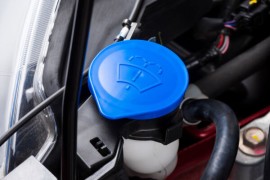{
"lazyNodes": false,
"abFitnotesFlag": false,
"abCrawlReviews": false,
"productOptionsCookie": false,
"orderDelayFlag": false,
"skipSessionCookie": false,
"covidMessage": false,
"fullTitleCookie": false,
"nrLoggerCookie": false,
"checkoutReviewCookie": false,
"productOptionSeqCookie": false,
"maintenanceFlag": false,
"bufferETACookie": false,
"multiShippingDiscountFlag": false,
"newFitmentFlag": false,
"surveyOptInFlag": false,
"crossSellFlag": false,
"skuMappingFlag": false,
"paySplitCookie": false,
"callDisableFlag": false,
"zipPaymentFlag": "u",
"hassleFreeReturn": false,
"lifetimeReplacement": false,
"cpn_off": false
}Volvo 850 Wiper Arms
Shop Catalog
![]() WARNING: This product can expose you to chemicals including Formaldehyde, which is known to the State of California to cause cancer and birth defects or other reproductive harm. For more information go to www.P65Warnings.ca.gov.
WARNING: This product can expose you to chemicals including Formaldehyde, which is known to the State of California to cause cancer and birth defects or other reproductive harm. For more information go to www.P65Warnings.ca.gov.
![]() WARNING: This product can expose you to chemicals including Formaldehyde, which is known to the State of California to cause cancer and birth defects or other reproductive harm. For more information go to www.P65Warnings.ca.gov.
WARNING: This product can expose you to chemicals including Formaldehyde, which is known to the State of California to cause cancer and birth defects or other reproductive harm. For more information go to www.P65Warnings.ca.gov.
![]() WARNING: This product can expose you to chemicals including Formaldehyde, which is known to the State of California to cause cancer and birth defects or other reproductive harm. For more information go to www.P65Warnings.ca.gov.
WARNING: This product can expose you to chemicals including Formaldehyde, which is known to the State of California to cause cancer and birth defects or other reproductive harm. For more information go to www.P65Warnings.ca.gov.
![]() WARNING: This product can expose you to chemical which is known to the State of California to cause cancer and birth defects or other reproductive harm. For more information go to www.P65Warnings.ca.gov.
WARNING: This product can expose you to chemical which is known to the State of California to cause cancer and birth defects or other reproductive harm. For more information go to www.P65Warnings.ca.gov.
![]() WARNING: This product can expose you to chemical which is known to the State of California to cause cancer and birth defects or other reproductive harm. For more information go to www.P65Warnings.ca.gov.
WARNING: This product can expose you to chemical which is known to the State of California to cause cancer and birth defects or other reproductive harm. For more information go to www.P65Warnings.ca.gov.
![]() WARNING: This product can expose you to chemical which is known to the State of California to cause cancer and birth defects or other reproductive harm. For more information go to www.P65Warnings.ca.gov.
WARNING: This product can expose you to chemical which is known to the State of California to cause cancer and birth defects or other reproductive harm. For more information go to www.P65Warnings.ca.gov.
Top Rated Products
Customer Guides
Troubleshooting Common Problems of Volvo 850 Wiper Arm
We often give very little importance to small things such as the wiper arms until we need them-and they don't properly work. Needless to say, unless you want to drive blind through the snow or torrential rain because your wiper arms fail to work, you should know what to do in case they fail. No, you don't pull over and call 911. There's a better, manly approach than that.
One wiper arm is slower than the other
It doesn't matter which side is small, wipers aren't designed to work that way. First determine which one is moving slower (or not at all). In most cases, the cause is a loose connection. If the wiper doesn't move, something is broken or rusted in the wiper arm. Remove the wiper arm to examine the connection. Tighten any loose part or replace rusted or broken part.
Wipers don't move at all
First check the bolts holding the wiper arm. If both bolts are not turning back and forth, it is definitely not the connection. If the wiper only clicks, there is definitely something loose in the wiper motor. Locate the motor and fix the problem. If something is broken and could not be fixed, or if the motor doesn't turn, replace the wiper motor.
Water smearing
Wiper blades stay good for at least 1 year. After that, they need to be replaced, especially if they smear water. But if you notice smearing even if the blades are relatively new, replace your windshield wiper fluid or clean your wiper and windshield. If the smearing persists, replace the wiper blades. Pull over to the side of the road if windshield smearing already affects your visibility. At 65 mph, you are covering 96 feet of ground and that's quite a lot. Don't risk it. After all, the solution is very simple.
If smearing only appears on one side, it is probably the cold weather and there's not much you can do about it. But if the weather is not cold and there's still smearing, you have to replace your wiper blade.Wiper arms are shaking
No, the problem isn't the blades. Open the plastic cover of the wiper arm to access the bolts. Tighten it down and your problem is solved.
The wiper arm is one part of the car that must be properly maintained. It may not have anything to do with your engine, but keeping it clean and working properly is a high priority. Here are the ways to maintain Volvo 850 Wiper Arm:
Don't use the wiper to de-ice your windshield.
Wipers are only meant to improve driving visibility when driving in rain or snow. The wiper motor is not designed to de-ice a sheet of ice on your windshield. Use an ice scraper or defroster to remove the snow on your windshield.
Inspect the blades regularly and the reservoir once a month.
Look for cracks, missing piece, and any damage in your wiper blade. Always fill windshield washer reservoir with water. If broken or bent, replace wiper arms immediately. Examine your wiper arm at least before each season begins.
Replace malfunctioning wiper blades.
Ideally, wiper blades should be replaced every year-sooner if you are starting to notice a squeak, smear, streak, or skip reducing driving visibility. A good time to replace your wiper blades is before the beginning of the rainy season.
Do not use your wiper to remove insect splatters or bird droppings.
Instead, wash your windshield with water and towel. Use a squeegee instead of the wiper to protect the wiper blades from tearing.
Inspect wiper arms every a couple of months.
Remove the wiper arm to see the connections. Tighten any loose parts. Change the wiper arm if it no longer attaches to the vehicle properly due to loose nuts and claws, rust, or worn out parts. One way to know if there is something wrong with the wiper is if one is moving slower than the other.
Park under the shade
If possible, do not park your vehicle under the sun for a long period of time. The heat from the sun can cause the blades to get brittle and crack. If parking under the sun is the only choice, pull your wipers up to help protect the blades. If your vehicle is parked under the tree, remove leaves and debris from the windshield and the wipers before driving.













